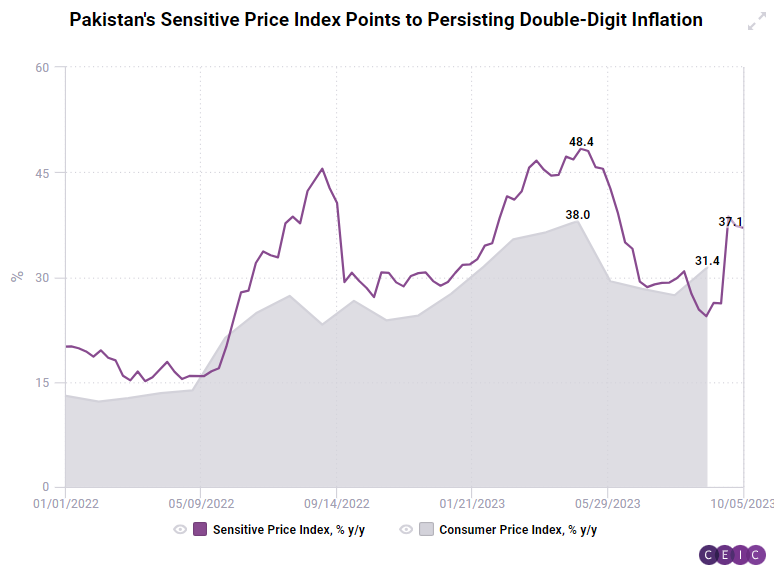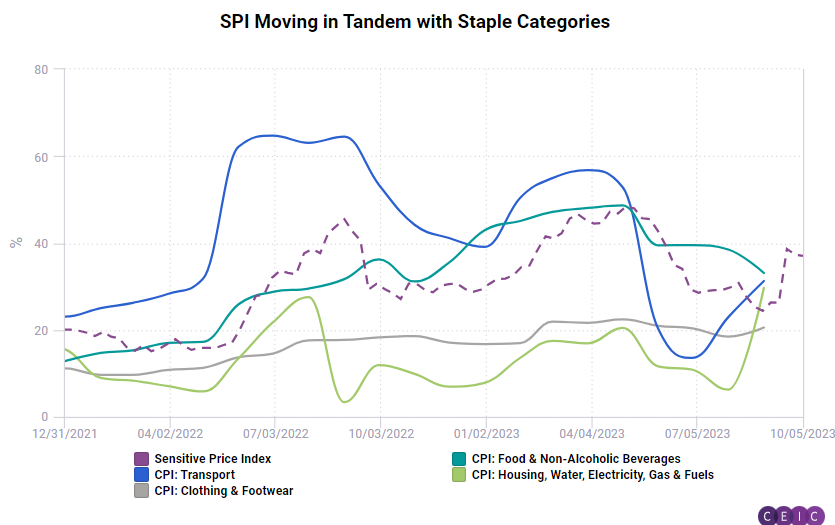
Pakistan is expected to see persistently excessive inflation with both headline and core inflation reaching 31.4% and 18.6% y/y, respectively, in September 2023. This is significantly above the State Bank of Pakistan's inflation target of 11.5%, albeit a moderation from its recent peak inflation of 38% in May 2023. With cumulative inflation around 75% over three years, this puts Pakistan on the brink of hyperinflation.

The weekly Sensitive Price Indicator (SPI) by Pakistan's central bank, which measures price movements for a basket of 51 essential commodities, suggests that high inflation is expected to persist. The indicator grew in excess of 35% since the week of 21 September 2023. This was just a slight moderation compared to the SPI growth above 40% from February-early June 2023. However, moving forward, there are no strong indication of any significant downward pressure on price levels -- indeed, unrest in the Middle East may send fuel prices further up, especially as supply chain disruptions hit in the near future.

The SPI emphasizes only essential commodities (covering staple food items, electricity and heating, fuel, telecommunication and selected clothing and consumer goods) and comes with subindices for different price thresholds. Combined with its high release frequency, this makes the SPI a reliable bellwether for inflation, with emphasis on consumers with high proportion of consumption on these staple goods (i.e.: likely the marginalised category). This also puts forth a strong case for the SPI as a welfare measure among marginalised economic segments.

Pakistan recently saw a combination of economic uncertainties, natural disasters, and challenging external conditions. These, in turn, necessitated the government to undertake sharp fiscal adjustments, including the removal of subsidies and implementation of new or increased taxation. In tandem with rising fuel prices, these reforms sent Pakistan's inflation into overdrive.
The CEIC Global Database provides access to a vast database where users can gain insight into the ever-changing dynamics of world economies.
.png?width=160&name=ceic-logo-Vector%20logo%20no%20tagline%20(002).png)
